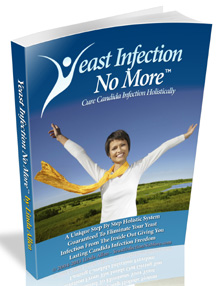The Scenario of Chronics Yeast Infection
Free Video Reveals 1 Weird Tip To Quickly Cure Your Candida Overgrowth & Enjoy Permanent Freedom From Yeast Infections In As Little As 12 Hours - Guaranteed!
>> Yeast Infection Guaranteed Treatment Click Here <<
While it is often called Chronic Candidiasis in medical terms, chronics yeast infection results from an overgrowth of yeast in the gastrointestinal tract. However, it can likewise occur in conjunction with mucus membrane. There are a wide range of factors underlying an elevated risk of chronics yeast infection including using antibiotics, taking birth control pills, taking food loaded with carbohydrates, yeast-containing food, and pregnancy (in case of women).
Yeast infection illness symptoms can be complicated for those trying to diagnose their condition. Chronics yeast infection is represented by a variety of symptoms depending on the specific label of infection. In case of women, for example, vaginal infection by yeast shows in recurring symptoms of itching, a burning sensation, and abnormality in discharge. Gastrointestinal infection is shown by symptoms such as heartburn, bloating, constipation or diarrhea. A respiratory allergy with sneezing and puffing is another indicator of the condition. Menstrual abnormalities in women can correspondingly point to infection with yeast. Anxiety, frequent memory lapses, depressed mood, and lack of alertness are all possible symptoms associated with the effect of chronic candidiasis on the nervous system. Fatigue, headache, and irritability are some of the other generic symptoms associated with yeast infection.
The prognosis is often not that clear. Chronic candidiasis is an ailment that still lacks a remarkably precise and clear definition. Therefore, no laboratory test exists that can point out an affliction clearly. For Down-to-earth purposes, all cases of recurring vaginal irritation and thick vaginal discharge are projected as plausible cases of chronic candidiasis at the root. Patients with generic complaints as mentioned above receive a physical examination, CBC (Conclusive Blood Count) diagnosis, tests for serum and liver enzymes, and reading of thyroid glands. If these checks reveal no other dysfunction, then chronics yeast infection is projected as the workable cause of the symptoms reported.
The treatment of Chronic Yeast Infection can be more complex than one might think. Therapies for treating chronic candidiasis encompass substantial treatment with anti-fungal drugs until the symptoms are totally eliminated. Nystatin is the many admired drug for this purpose, taken orally and (in women with vaginal infection) as suppository. Moreover, food changes are suggested, particularly a check on foods rich in sugar or simple carbohydrates. An additional specialized therapy is candida allergy shots that allow the immune system of the body to block out future growth of candida after it has been injected into the patient's body in very small amounts.
Considering how to prevent Yeast Overgrowth Infections might be the best approach. Preventing chronic yeast infection requires you to keep clear of moldy (hot and damp) environments, practice regular body cleansing (bowel, kidney, liver and mouth), keep physically active, and wear clothes that allow sufficient air inside so that a person is not damp with sweat. Use yogurt with food in a proper amount to defeat the infectious yeast in the bowels and digestive tract. Eat healthy and stay healthy.
You can see some of his work at www.stopcandida.com
Labels: candida_yeast_infection, home_cure_for_yeast_infection, natural_cure_for_yeast_infection, treating_yeast_infection

